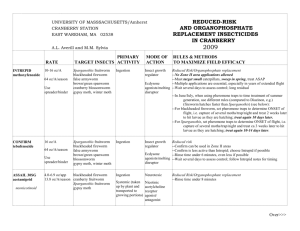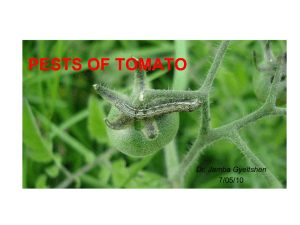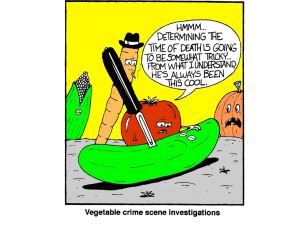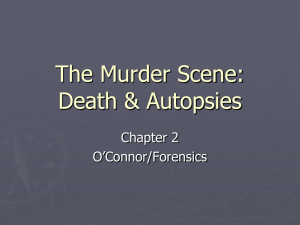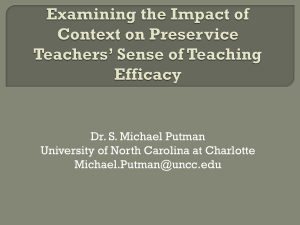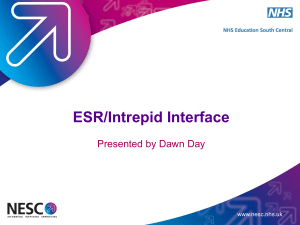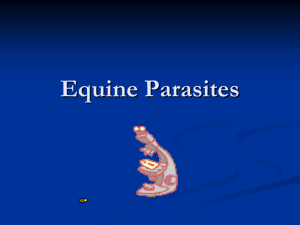PPT
advertisement
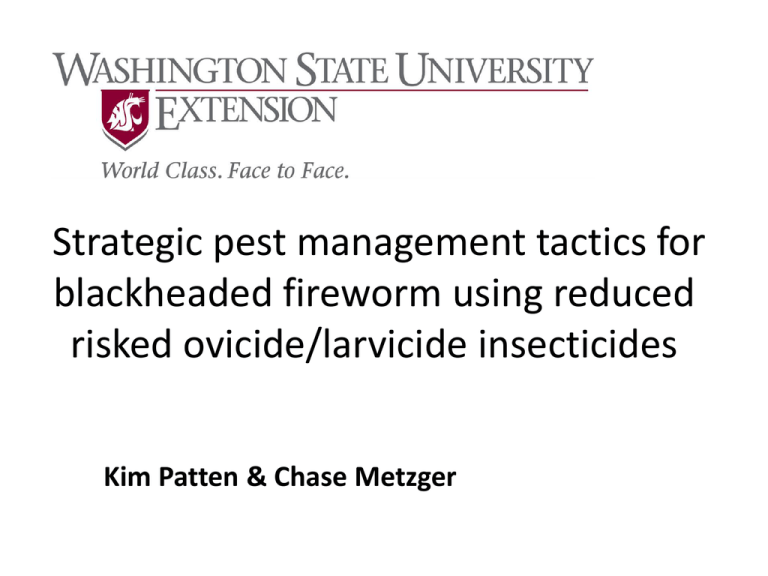
Strategic pest management tactics for blackheaded fireworm using reduced risked ovicide/larvicide insecticides Kim Patten & Chase Metzger Background: • In 2015 the Washington Department of Agriculture will most likely ban the use of OPs on 56% of cranberry beds in WA, due to water quality issues. • Alternative reduced risk chemistries for fireworm control have been getting adopted by the industry, but control hasn’t always been satisfactory. Grower survey July 2013 on their satisfaction with Altacor never used moderately satisified very satisified unsure • There are a lot of new reduced risk insecticides that we are only beginning to figure out how to best use. • Most applications are chemigated on systems with poor uniformity (DU< 70%) which compromise efficacy • Our insect pests have a very asynchronous hatch (3+ weeks) which make insecticide timing more challenging Project objectives: • Assess an array of new insecticide for efficacy against fireworm • Assess duration of field efficacy • Optimize timing intervals • Develop more refined IPM program for fireworm management Blackheaded Fireworm Rhobobota naevana 2 generations / year Overwinters as egg Insecticide efficacy 1st generation BHFW efficacy trials # alive larvae per sets of 5 sweeps 60 40 20 0 a b b Applied 5/11 assessed 5/13 and 5/20 a b 2nd generation BHFW efficacy trials # alive larvae per two sets of 5 sweeps 30 20 a 10 a a b 0 Control Venerate Grandevo Danitol b Altacor Applied 7/21 assessed 7/25 & 7/29 larvae size equally distributed between 1 and 5 instar Duration of field efficacy Duration of field efficacy – fireworm 2nd generation Treatments were applied weekly (5/27 to 6/26) Which applications failed to provide control? Treatment window Sweep for efficacy Duration of field efficacy – fireworm 2nd generation 5 different timings (5/27 to 6/26) – how long do they provide control? 16 Spray dates a 33 days of control w/ Altacor 19 days of control w/ Intrepid 14 12 ab 10 ab ab ab 8 Altacor 6 Intrepid 4 2 # larvae per 5 sweeps on 7/8/2013 0 5/27/2013 300 200 100 0 5/27/2013 c c 6/6/2013 Plots swept for efficacy 6/16/2013 c 6/26/2013 7/6/2013 1 16 1 BHFW adults trap counts 6/6/2013 6/16/2013 6/26/2013 7/6/2013 Container of cranberries treated with Altacor or Intrepid before or after exposure to fireworm adults and assessed for damaged DBE - days before exposure DAE – days after exposure 10 DBE 5 DBE 1 DBE 1 DAE 5 days exposure 5 DAE 10 DAE % containers with fireworm damage 100 80 a 5 day exposure ab 60 Altacor Intrepid ab 40 20 ab b 0 10 DBT b b 5 DBT 1 DBT b b 1 DAT b 5 DAT Data – highly variable Intrepid applied pre-egg laying – minimal control Altacor applied pre or post-egg laying - control b 10 DAT Optimize timing intervals replicated trials Traditional insecticide timing Timing window Timing window With new reduced risk insecticides – what is the ideal timing and frequency? Do you get any ovicidal activity? Do you get any adulticidal activity? How long is the duration of field activity? Pre-hatch application of insecticide for control of 1st generation BHFW Treatments applied May 30, 2013 –at early rough neck ~ 1/4” growth; no larvae present # alive larvae per 5 sweeps May 6th sweeping 35 30 May 17th sweeping Treat sweep a 25 20 15 10 a 31 21.5 5 0 Control b b 0 0 Intrepid b b 0 0 Altacor Early timing for 1st generation provides superlative control, even under high pressure (17 days of control) # alive fireworm per 10 sweeps 23-Jul 8 3-Aug Treat sweep a 6 a 4 2 ab b a ab a a 0 Control Altacor Intrepid Cyazypyr Treatments applied 6/11/12 at first significant moth flight treat Total # alive BHFW larvae # of larvae/ 5 sweeps 50 40 untreated Delegate Altacor Cyazypyr 30 20 10 0 6/24 Treat 7/8 7/22 sweep 8/7 sweep # alive fireworm per 5 sweeps 16-Jul 50 a 40 23-Jul Treat sweep a 30 20 b 10 b b a b ab 0 Control Altacor Intrepid Cyazypyr Treatments applied 6/29/12 just prior to egg hatch Develop more refined IPM program for fireworm management • Refinement of trapping • Use of trap data with GDD models • Consideration of additional insect pest • Resistance management Z traps IPM timing strategies for control 20 dd 110 dd 145 dd from biofix A or I A or I • Comparison of Apples to Cranberries in the PNW – 2nd generation Codling moth larvae • Altacor: ~120 to 150 dd base 10˚C from biofix • Intrepid: ~130 to 150 dd base 10˚C from biofix – 2nd generation larvae Fireworm larvae • Altacor: ~110 to 150 dd base 10˚C from biofix • Intrepid: ~130 to 140 dd base 10˚C from biofix How do you overlay an Insecticide to target multiple insects May June July August Sept. Resistance management Group 18 – Intrepid Group 5- Delegate Group 22- Avaunt Group 28- Altacor, Cyazypr Summary • Good field duration (Altacor>Intrepid≥Cyazypyr>Delegate) • A fail-proof IPM for fireworm is feasible
